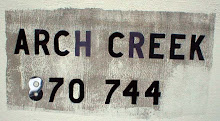
Scientists say the 10,000 miles of canals dug through the Mississippi delta to provide access to oil wells have largely contributed to the loss of protective wetlands. Story here.
[A] substantial body of evidence points to oil's heavy toll.
The canals, most dug to access wells by bucket dredges between the 1930s and 1970s when restrictions and mitigation requirements were lax to nonexistent, crisscross the marshy coast like a liquid maze. [I have lots of problems with this paragraph but you get the drift.]
In many places, they run perpendicular to the Gulf of Mexico shoreline, allowing salt water to intrude far inland. . . .
The muddy slop dredged from the canals had to go somewhere. Oil companies piled it where they found it, creating an estimated 13,000 miles of tide-blocking spoil banks. . . .
The damage doesn't stop with the canals. For example, U.S. Geological Survey scientists say the sucking out of the ground of so much oil and gas likely caused the land in many places to sink by half an inch a year. In oil's heyday 30 years ago, Louisiana's coastal wells pumped 360 million barrels a year, an eighth of what Saudi Arabia ships to the market today.
Oil wells also discharged about a billion gallons daily of brine, thick with naturally occurring subsurface chemicals like chlorides, calcium and magnesium, as well as acids used in drilling.
"It was poured into the marshes," said Virginia Burkett, a longtime researcher of the Louisiana wetlands and the chief scientist for climate change at USGS. It contaminated soils and killed plants and animals, she said, before brine dumping was finally regulated in coastal marshes in 1985. . . .
"It seems that the government should hold them accountable for some of the problem," Griffin said from behind his cash register.
At mid-20th century, marsh-borne oil derricks towered over Leeville's shacks as far as the eye could see, replacing fields of cotton. Today, those same places, chopped up by bucket dredges, are open water. A town cemetery lies in the water, its tombs barely visible. And as Leeville goes under, New Orleans, 50 miles to the northeast, becomes that much more exposed. . . .
In the early 1980s, then-Gov. David Treen proposed a coast-and-levee tax by slapping a levy of 36 cents on every barrel of oil and 6 cents on every 1,000 cubic feet of gas that crossed the coastal plain; but the measure didn't muster the two-thirds majority needed in the state Legislature. . . .
Eventually, petrodollars may provide relief. In 2006, Congress approved a plan to give Louisiana and other Gulf states a large portion of offshore royalties the industry now pays to the federal Treasury. By 2017, Louisiana hopes to get as much as $650 million a year.
Meanwhile, the anything-goes days for oil are over. Regulators demand the use of less-damaging techniques - directional drilling, rerouting of pipelines, wetlands mitigation. . . .
"It's like strip mining. A good strip miner will repair the land." . . .
For its part, the industry balks at talk of paying for the damage. . . .
For now, the oil companies are winning the public relations battle, in part by spending $5 million on a marketing campaign called America's Wetland. "Tell Washington to shore up America's energy coast. It fuels the nation," one TV ad implores, calling on Congress to spend the money it will take to restore the delta. Nowhere is oil's responsibility mentioned.
Many Louisiana politicians, including former Gov. Kathleen Blanco, have backed the campaign. . . .
Sounds like a classic example of the folly of unregulated capitalism. And not only have these companies despoiled the land and wreaked all manner of havoc as a result, they now deny it and concoct a PR plan to have the taxpayers clean up after them. Brilliant.

No comments:
Post a Comment